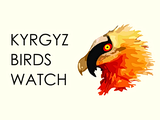search
classification
|
basic information
|
video
|
reports |
Richard's Pipit
Anthus richardi (Vieillot, 1818)

|

|
|
|
2015-07-11
near Irkitsk, Baikal reg. |
© Vadim Ivushkin
|
|
Description
Adult Richard's Pipits in breeding plumage have greyish-buff upperparts with broad dark-brownish centers of feathers of back and head. Supercillium is pale-buff, ear coverts are brownish-buff. Underparts are white buffy tinged on body flanks and craw, which is dark-brownish mottled. Flight feathers and their coverts are brownish with pale edges. Central pair of tail feathers is brownish with pale-buff edges, other ones are dark-brownish but two outer pairs are with much white. Upper mandible is dark-brownish, lower one is greyish-buff dark tipped. Legs and claws are pale-brownish. In fresh plumage after autumn moulting birds have rusty- of yellowish-buff edges of feathers especially on breast, flanks, wings and back. Juveniles are dark-brownish above with pale-buff edges on feathers of head, neck, back and uppertail. Underparts are off white pale-buff tinged on flanks and craw which is black-brown mottled. Throat is white, pale supercillium is not well expressed. Bill is brownish with paler low mandible. Legs and claws are pale-brown. Sizes: wing 85-99, tail 78-87, tarsus 29-33, bill 12-15 mm. Weight 27-37 gr.
Biology
Richard's Pipit is common, in places rare breeding migrant. It inhabits tussock marshes, wet sedge/herbaceous meadows, wet steppes, saline soil areas in marshy meadows, dry hummock country in foothills and mountains up to 1800-2000 m. During migration it also occurs in dry steppes, arable fields, hayfields and deserts. Appears in end April or early May. Breeds in separate pairs. Ground nest is made in shallow scrape from grass and is lined with thinner and softer material. Nest still not found in Kazakhstan. Clutches of 4-6 egg probably laid mid - end May. Juveniles fledge from end of June till late July. Most birds disappear in August, last birds recorded in mid November.
References










